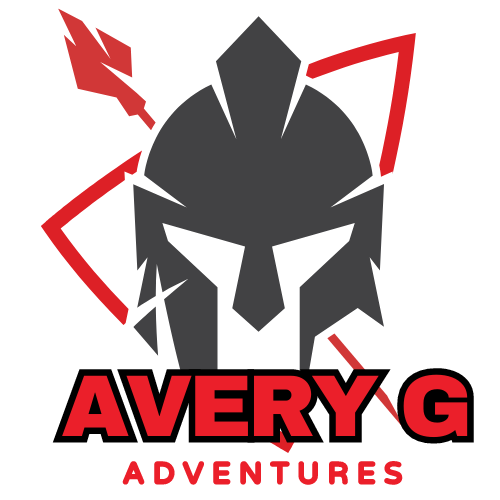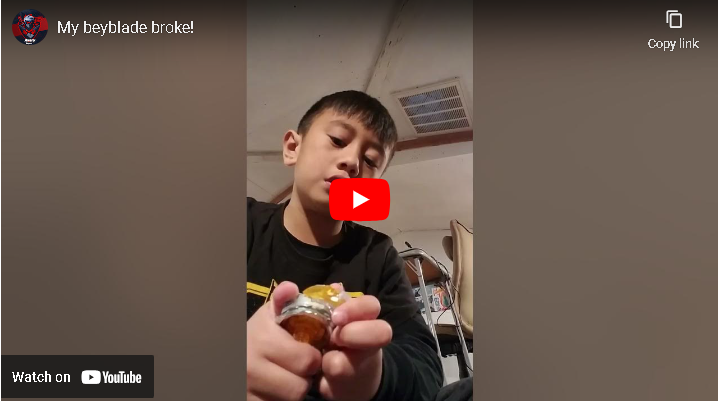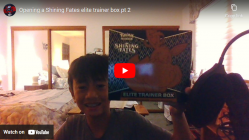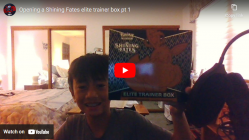Sure, here’s the first part of your story:
I couldn’t believe my eyes as I watched my prized beyblade, the one I had meticulously customized and honed through countless battles, shatter into pieces on the arena floor. It was a devastating blow, both literally and emotionally. The stadium echoed with the clatter of metal and plastic, the aftermath of a fierce clash that had ended in unexpected destruction.
My Strong Beyblade Broke!
The opponent’s beyblade, a formidable opponent with an aggressive design, had delivered a final, decisive blow that my own beyblade couldn’t withstand. Its layers, meticulously chosen for balance and strength, lay scattered like fragments of a defeated warrior. The arena fell silent, save for the gasps and murmurs of onlookers who had witnessed the dramatic end to a hard-fought battle.
I knelt beside the remains, feeling a mix of disbelief and sorrow. This beyblade wasn’t just a toy to me; it was a symbol of my dedication and skill in the sport I loved. Countless hours had been spent fine-tuning its performance, adjusting its weight distribution, and perfecting its spin. Now, all that effort seemed futile in the face of its sudden, unexpected demise.
As I gathered the broken pieces in my hands, memories flooded back—of victories won and challenges overcome, of friends made through shared passion for spinning tops and strategic battles. Each scratch and mark told a story, a testament to the battles it had endured and triumphed. But now, those tales seemed to have reached an abrupt and tragic conclusion.
I looked across the stadium at my opponent, who stood silently, his expression a mix of respect and regret. We had both known the risks going into the match, understood that in beyblade battles, victory often came at a cost. Yet, the loss still stung deeply, cutting through the exhilaration of competition like a blade.
Slowly, I rose to my feet, clutching the remnants of my beyblade tightly. The crowd, sensing the gravity of the moment, erupted into applause—a tribute not just to the battle that had unfolded but to the spirit of sportsmanship and dedication that beyblade enthusiasts everywhere held dear.
Sure, here’s the first part of your story:
I couldn’t believe my eyes as I watched my prized beyblade, the one I had meticulously customized and honed through countless battles, shatter into pieces on the arena floor. It was a devastating blow, both literally and emotionally. The stadium echoed with the clatter of metal and plastic, the aftermath of a fierce clash that had ended in unexpected destruction.
The opponent’s beyblade, a formidable opponent with an aggressive design, had delivered a final, decisive blow that my own beyblade couldn’t withstand. Its layers, meticulously chosen for balance and strength, lay scattered like fragments of a defeated warrior. The arena fell silent, save for the gasps and murmurs of onlookers who had witnessed the dramatic end to a hard-fought battle.
I knelt beside the remains, feeling a mix of disbelief and sorrow. This beyblade wasn’t just a toy to me; it was a symbol of my dedication and skill in the sport I loved. Countless hours had been spent fine-tuning its performance, adjusting its weight distribution, and perfecting its spin. Now, all that effort seemed futile in the face of its sudden, unexpected demise.
As I gathered the broken pieces in my hands, memories flooded back—of victories won and challenges overcome, of friends made through shared passion for spinning tops and strategic battles. Each scratch and mark told a story, a testament to the battles it had endured and triumphed. But now, those tales seemed to have reached an abrupt and tragic conclusion.
I looked across the stadium at my opponent, who stood silently, his expression a mix of respect and regret. We had both known the risks going into the match, understood that in beyblade battles, victory often came at a cost. Yet, the loss still stung deeply, cutting through the exhilaration of competition like a blade.
Slowly, I rose to my feet, clutching the remnants of my beyblade tightly. The crowd, sensing the gravity of the moment, erupted into applause—a tribute not just to the battle that had unfolded but to the spirit of sportsmanship and dedication that beyblade enthusiasts everywhere held dear.
Sure, here’s the first part of your story:
I couldn’t believe my eyes as I watched my prized beyblade, the one I had meticulously customized and honed through countless battles, shatter into pieces on the arena floor. It was a devastating blow, both literally and emotionally. The stadium echoed with the clatter of metal and plastic, the aftermath of a fierce clash that had ended in unexpected destruction.
The opponent’s beyblade, a formidable opponent with an aggressive design, had delivered a final, decisive blow that my own beyblade couldn’t withstand. Its layers, meticulously chosen for balance and strength, lay scattered like fragments of a defeated warrior. The arena fell silent, save for the gasps and murmurs of onlookers who had witnessed the dramatic end to a hard-fought battle.
I knelt beside the remains, feeling a mix of disbelief and sorrow. This beyblade wasn’t just a toy to me; it was a symbol of my dedication and skill in the sport I loved. Countless hours had been spent fine-tuning its performance, adjusting its weight distribution, and perfecting its spin. Now, all that effort seemed futile in the face of its sudden, unexpected demise.
As I gathered the broken pieces in my hands, memories flooded back—of victories won and challenges overcome, of friends made through shared passion for spinning tops and strategic battles. Each scratch and mark told a story, a testament to the battles it had endured and triumphed. But now, those tales seemed to have reached an abrupt and tragic conclusion.
I looked across the stadium at my opponent, who stood silently, his expression a mix of respect and regret. We had both known the risks going into the match, understood that in beyblade battles, victory often came at a cost. Yet, the loss still stung deeply, cutting through the exhilaration of competition like a blade.
Slowly, I rose to my feet, clutching the remnants of my beyblade tightly. The crowd, sensing the gravity of the moment, erupted into applause—a tribute not just to the battle that had unfolded but to the spirit of sportsmanship and dedication that beyblade enthusiasts everywhere held dear.
Sure, here’s the first part of your story:
I couldn’t believe my eyes as I watched my prized beyblade, the one I had meticulously customized and honed through countless battles, shatter into pieces on the arena floor. It was a devastating blow, both literally and emotionally. The stadium echoed with the clatter of metal and plastic, the aftermath of a fierce clash that had ended in unexpected destruction.
The opponent’s beyblade, a formidable opponent with an aggressive design, had delivered a final, decisive blow that my own beyblade couldn’t withstand. Its layers, meticulously chosen for balance and strength, lay scattered like fragments of a defeated warrior. The arena fell silent, save for the gasps and murmurs of onlookers who had witnessed the dramatic end to a hard-fought battle.
I knelt beside the remains, feeling a mix of disbelief and sorrow. This beyblade wasn’t just a toy to me; it was a symbol of my dedication and skill in the sport I loved. Countless hours had been spent fine-tuning its performance, adjusting its weight distribution, and perfecting its spin. Now, all that effort seemed futile in the face of its sudden, unexpected demise.
As I gathered the broken pieces in my hands, memories flooded back—of victories won and challenges overcome, of friends made through shared passion for spinning tops and strategic battles. Each scratch and mark told a story, a testament to the battles it had endured and triumphed. But now, those tales seemed to have reached an abrupt and tragic conclusion.
I looked across the stadium at my opponent, who stood silently, his expression a mix of respect and regret. We had both known the risks going into the match, understood that in beyblade battles, victory often came at a cost. Yet, the loss still stung deeply, cutting through the exhilaration of competition like a blade.
Slowly, I rose to my feet, clutching the remnants of my beyblade tightly. The crowd, sensing the gravity of the moment, erupted into applause—a tribute not just to the battle that had unfolded but to the spirit of sportsmanship and dedication that beyblade enthusiasts everywhere held dear.
Sure, here’s the first part of your story:
I couldn’t believe my eyes as I watched my prized beyblade, the one I had meticulously customized and honed through countless battles, shatter into pieces on the arena floor. It was a devastating blow, both literally and emotionally. The stadium echoed with the clatter of metal and plastic, the aftermath of a fierce clash that had ended in unexpected destruction.
The opponent’s beyblade, a formidable opponent with an aggressive design, had delivered a final, decisive blow that my own beyblade couldn’t withstand. Its layers, meticulously chosen for balance and strength, lay scattered like fragments of a defeated warrior. The arena fell silent, save for the gasps and murmurs of onlookers who had witnessed the dramatic end to a hard-fought battle.
I knelt beside the remains, feeling a mix of disbelief and sorrow. This beyblade wasn’t just a toy to me; it was a symbol of my dedication and skill in the sport I loved. Countless hours had been spent fine-tuning its performance, adjusting its weight distribution, and perfecting its spin. Now, all that effort seemed futile in the face of its sudden, unexpected demise.
As I gathered the broken pieces in my hands, memories flooded back—of victories won and challenges overcome, of friends made through shared passion for spinning tops and strategic battles. Each scratch and mark told a story, a testament to the battles it had endured and triumphed. But now, those tales seemed to have reached an abrupt and tragic conclusion.
I looked across the stadium at my opponent, who stood silently, his expression a mix of respect and regret. We had both known the risks going into the match, understood that in beyblade battles, victory often came at a cost. Yet, the loss still stung deeply, cutting through the exhilaration of competition like a blade.
Slowly, I rose to my feet, clutching the remnants of my beyblade tightly. The crowd, sensing the gravity of the moment, erupted into applause—a tribute not just to the battle that had unfolded but to the spirit of sportsmanship and dedication that beyblade enthusiasts everywhere held dear.
Sure, here’s the first part of your story:
I couldn’t believe my eyes as I watched my prized beyblade, the one I had meticulously customized and honed through countless battles, shatter into pieces on the arena floor. It was a devastating blow, both literally and emotionally. The stadium echoed with the clatter of metal and plastic, the aftermath of a fierce clash that had ended in unexpected destruction.
The opponent’s beyblade, a formidable opponent with an aggressive design, had delivered a final, decisive blow that my own beyblade couldn’t withstand. Its layers, meticulously chosen for balance and strength, lay scattered like fragments of a defeated warrior. The arena fell silent, save for the gasps and murmurs of onlookers who had witnessed the dramatic end to a hard-fought battle.
I knelt beside the remains, feeling a mix of disbelief and sorrow. This beyblade wasn’t just a toy to me; it was a symbol of my dedication and skill in the sport I loved. Countless hours had been spent fine-tuning its performance, adjusting its weight distribution, and perfecting its spin. Now, all that effort seemed futile in the face of its sudden, unexpected demise.
As I gathered the broken pieces in my hands, memories flooded back—of victories won and challenges overcome, of friends made through shared passion for spinning tops and strategic battles. Each scratch and mark told a story, a testament to the battles it had endured and triumphed. But now, those tales seemed to have reached an abrupt and tragic conclusion.
I looked across the stadium at my opponent, who stood silently, his expression a mix of respect and regret. We had both known the risks going into the match, understood that in beyblade battles, victory often came at a cost. Yet, the loss still stung deeply, cutting through the exhilaration of competition like a blade.
Slowly, I rose to my feet, clutching the remnants of my beyblade tightly. The crowd, sensing the gravity of the moment, erupted into applause—a tribute not just to the battle that had unfolded but to the spirit of sportsmanship and dedication that beyblade enthusiasts everywhere held dear.
Sure, here’s the first part of your story:
I couldn’t believe my eyes as I watched my prized beyblade, the one I had meticulously customized and honed through countless battles, shatter into pieces on the arena floor. It was a devastating blow, both literally and emotionally. The stadium echoed with the clatter of metal and plastic, the aftermath of a fierce clash that had ended in unexpected destruction.
The opponent’s beyblade, a formidable opponent with an aggressive design, had delivered a final, decisive blow that my own beyblade couldn’t withstand. Its layers, meticulously chosen for balance and strength, lay scattered like fragments of a defeated warrior. The arena fell silent, save for the gasps and murmurs of onlookers who had witnessed the dramatic end to a hard-fought battle.
I knelt beside the remains, feeling a mix of disbelief and sorrow. This beyblade wasn’t just a toy to me; it was a symbol of my dedication and skill in the sport I loved. Countless hours had been spent fine-tuning its performance, adjusting its weight distribution, and perfecting its spin. Now, all that effort seemed futile in the face of its sudden, unexpected demise.
As I gathered the broken pieces in my hands, memories flooded back—of victories won and challenges overcome, of friends made through shared passion for spinning tops and strategic battles. Each scratch and mark told a story, a testament to the battles it had endured and triumphed. But now, those tales seemed to have reached an abrupt and tragic conclusion.
I looked across the stadium at my opponent, who stood silently, his expression a mix of respect and regret. We had both known the risks going into the match, understood that in beyblade battles, victory often came at a cost. Yet, the loss still stung deeply, cutting through the exhilaration of competition like a blade.
Slowly, I rose to my feet, clutching the remnants of my beyblade tightly. The crowd, sensing the gravity of the moment, erupted into applause—a tribute not just to the battle that had unfolded but to the spirit of sportsmanship and dedication that beyblade enthusiasts everywhere held dear.
Sure, here’s the first part of your story:
I couldn’t believe my eyes as I watched my prized beyblade, the one I had meticulously customized and honed through countless battles, shatter into pieces on the arena floor. It was a devastating blow, both literally and emotionally. The stadium echoed with the clatter of metal and plastic, the aftermath of a fierce clash that had ended in unexpected destruction.
The opponent’s beyblade, a formidable opponent with an aggressive design, had delivered a final, decisive blow that my own beyblade couldn’t withstand. Its layers, meticulously chosen for balance and strength, lay scattered like fragments of a defeated warrior. The arena fell silent, save for the gasps and murmurs of onlookers who had witnessed the dramatic end to a hard-fought battle.
I knelt beside the remains, feeling a mix of disbelief and sorrow. This beyblade wasn’t just a toy to me; it was a symbol of my dedication and skill in the sport I loved. Countless hours had been spent fine-tuning its performance, adjusting its weight distribution, and perfecting its spin. Now, all that effort seemed futile in the face of its sudden, unexpected demise.
As I gathered the broken pieces in my hands, memories flooded back—of victories won and challenges overcome, of friends made through shared passion for spinning tops and strategic battles. Each scratch and mark told a story, a testament to the battles it had endured and triumphed. But now, those tales seemed to have reached an abrupt and tragic conclusion.
I looked across the stadium at my opponent, who stood silently, his expression a mix of respect and regret. We had both known the risks going into the match, understood that in beyblade battles, victory often came at a cost. Yet, the loss still stung deeply, cutting through the exhilaration of competition like a blade.
Slowly, I rose to my feet, clutching the remnants of my beyblade tightly. The crowd, sensing the gravity of the moment, erupted into applause—a tribute not just to the battle that had unfolded but to the spirit of sportsmanship and dedication that beyblade enthusiasts everywhere held dear.









Collaboratively e-enable cross-platform networks after plug-and-play web-readiness. Energistically expedite pandemic scenarios before.
Objectively synthesize cross-unit core competencies and client-based ROI. Holisticly redefine cooperative imperatives through worldwide leadership skills. Appropriately whiteboard proactive quality vectors before standardized partnerships. Rapidiously repurpose principle-centered supply chains.
Efficiently leverage other\’s dynamic processes without leveraged human capital. Energistically.